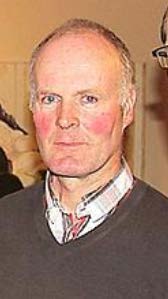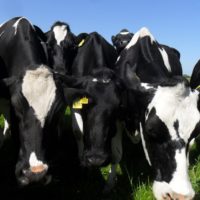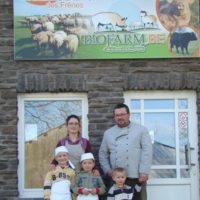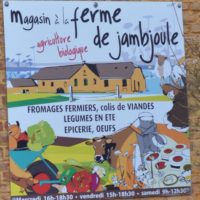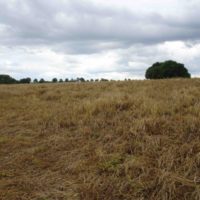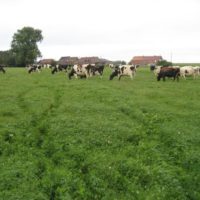Herd-screening tool
Data collection allows more effective selection resulting in successful breeding
Farm: “Cord und Ina von Runnen GbR”
Location: Oldenbrok (Lower Saxony), Germany
Case study
 Herd-screening tool (.pdf)
Herd-screening tool (.pdf)
Description
Background
Cord von Runnen `s farm is a dairy farm which is specialised in organic farming since two years. It is a family-owned farm with 170 dairy cows located in a grassland region with temperate oceanic climate. The conversion to organic farming has given Cord von Runnen a number of new challenges and conditions. Herd typing was a valuable instrument for him to adapt the herd to his new conditions. The herd typing allows an individual mating with an automatic adjustment advice for his breeding index. This means that he is able to make site-specific mating if we highlight the right characteristics for his HF grazing cows. His target was to use the heterosis effect by using crossbreeds in the breeding line.
On his farm selected animals are genomically tested and the data are stored in a digital management system. Cord von Runnen sets specific breeding goals for his individual challenges and circumstances and thus creates his own breeding index (ecological). The genomically tested animals are divided into categories with the help of its breeding index and later proposals for mating are made automatically. The main task is therefore to determine the breeding objectives, which can certainly vary but provide an enormous potential for the specific use of cow genetics. Cord von Runnen has the chance to make future management decisions based on the genomic data determined for his female animals.
Detailed description
Cord von Runnen was highly motivated to improve the health of his herd. He decided to implement the innovation because it offers the opportunity to improve the breeding of dairy cattle herds and thus the health of his herd. Genomic breeding values are determined for all young females (up to and including the first calves) and health and claw data are recorded. The used program Netrind Genom provides by Masterrind provides all important information for a complete evaluation of his animals online at any time. In addition, various evaluation tools are used to check the status and development of his herd and the tools make it possible to compare data with other farms. The innovation includes an even better bull selection based on the safe genomic breeding values of the examined female animals. Cord von Runnen focus especially on hornlessness, hoof health, overall fitness, milk volume and udder health.
Results
With the help of herd typing and consulting, a suitable breeding index could be created for Cord von Runnens farm. The genomic testing enabled the adaptation to local conditions and the von Runnen`s farm characteristics. Especially udder health was improved as well as the cow´s´hoof health.
Adoption criteria
To achieve an adequate level of the genetic progress requires the support of specific expertise. According to this, von Runnen farm has an advisor expert from a breeding cooperative called Masterrind. Since the program is offered by Masterrind it is therefore accessible to everyone. Each farm can create its own breeding index and meet its challenges through personal evaluation of data.
By this, the foundation has been laid for a future establishment of new, economically important traits in the area of fertility and cow health and vitality on this farm.
Future prospects
The next steps will further strengthen autonomy with regard to using genetics in order to control the progress of the farms breed. The criteria of innovation can be adopted by any farmer willing to invest in genetics and farm specialization, namely, to record animal performances and to use the enormous potential of using cow genetics. What has to be considered is that after implementing a genomic breeding value estimation there are still challenges to be faced.
The incorporation and usage of health data as additional information for selection will be taken into account. The goal is to increase the benefits for farmers without knowledge in terms of breeding so that implementation will be facilitated. Another target will be to lower the costs for testing since the costs inhibit the demand from famers willing to improve their herds genetic.
Additional information
| Farming system | organic farming |
|---|---|
| Domains of innovation | animal type (breed) |
| Main types of animal | dairy cattle |
| Country | |
| Product type | Case study |
| Language | English |

